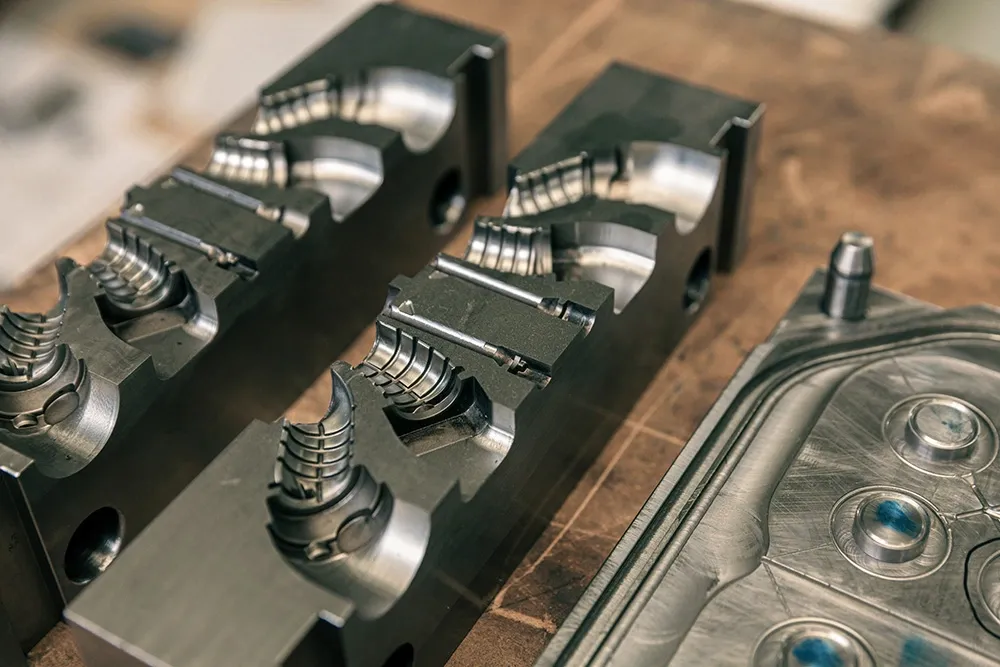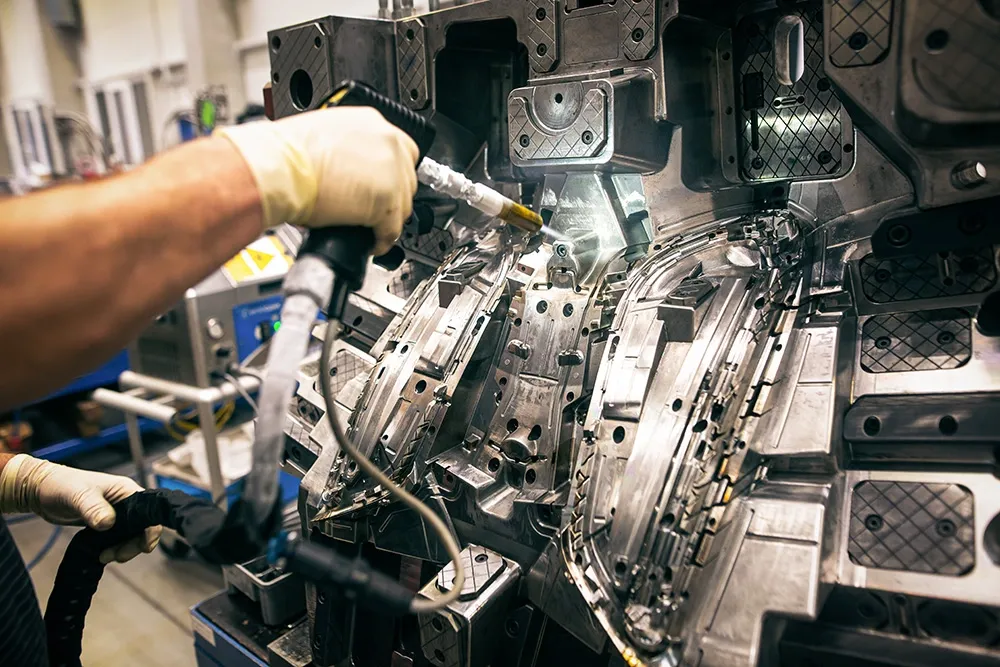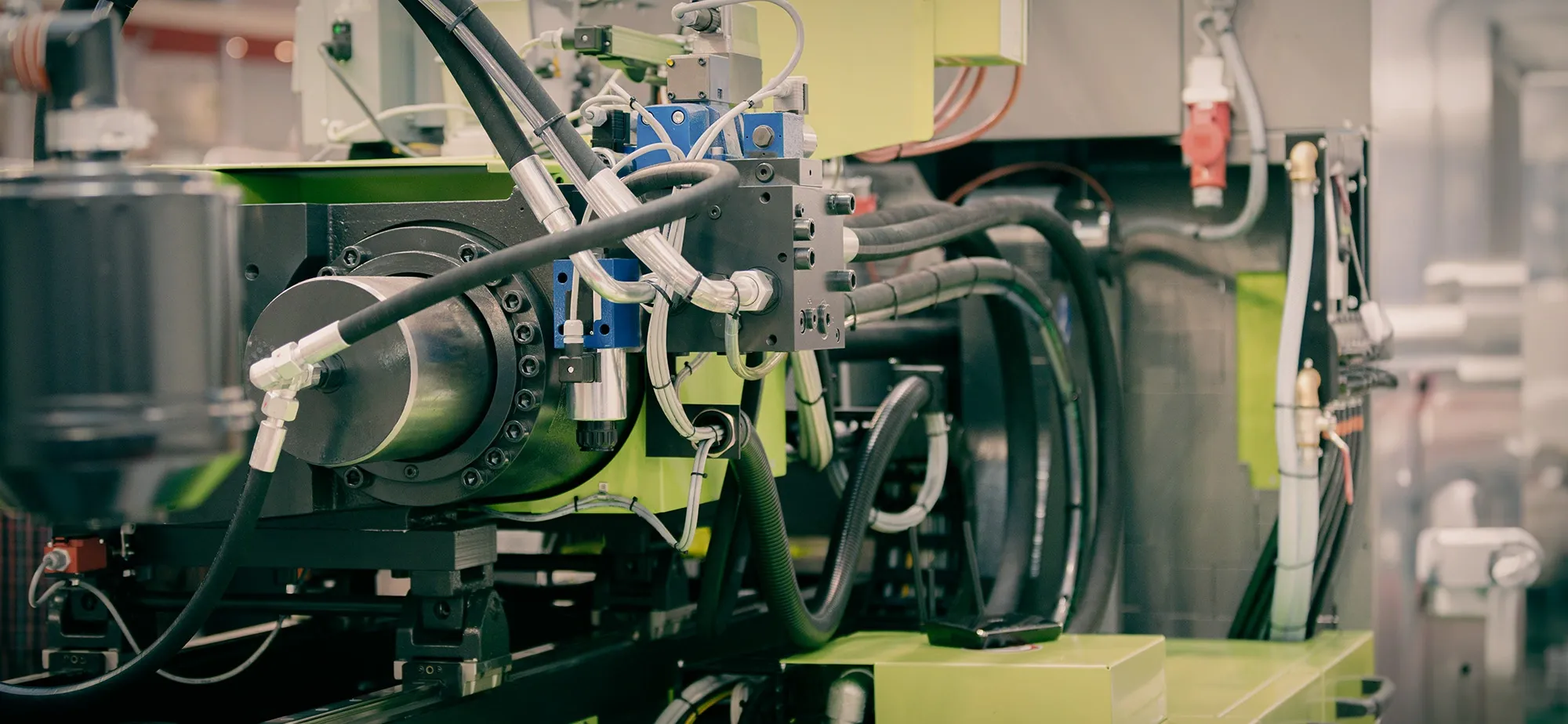In injection moulding, the journey to creating flawless parts involves a crucial step known as tooling loops. These loops serve as iterative cycles that refine the moulds and optimise the design, ensuring exceptional quality and functionality.
Moulding tools are intricate and precise machinery, necessitating precise alignment to ensure the production of high-quality parts. The verification of this alignment is accomplished through the creation of sample parts directly within the mould. Despite being constructed from high-grade steel, the substantial pressure exerted by the injected plastic can induce slight displacements in the mould cavities, resulting in variations in the final shape. Furthermore, this pressure may cause a marginal opening of the mould, leading to the escape of plastic material along the split lines, resulting in the occurrence of flash.

The tooling loops are also the first time to evaluate the product using the correct material, often leading to potential modifications in component design to enhance both fit and function. In scenarios where precise fits and optimal strength are paramount, designers may adopt a conservative approach by creating a biased design that is "metal safe," awaiting the tooling trials before perfecting the part's dimensions.
In the initial tooling trials, the main aesthetic surfaces of the product often remain unfinished, awaiting their final treatments such as polishing, vapour blasting, acid etching, or laser engraving. This deliberate approach stems from the practicality of adding surface finishes once all other modifications have been completed. By leaving the surface finish until the end, the risk of multiple applications or patching is mitigated, as these actions could potentially leave noticeable marks on the final part.
At this stage, finding a flow, filling, or warping problem poses significant challenges. These issues arise when the liquid plastic fails to adequately fill the mould, the injection moulding machine settings are pushed to their limits, or the component design lacks a proper balance between the strength and manufacturability requirements. Encountering these problems is bad news, as it necessitates extensive, additional, trials on the injection moulding machines or substantial modifications to the tooling, both of which consume a huge amount of time and budget. In the most severe cases, the part may need to be completely redesigned. To minimize the likelihood of these complications, early investment in Injection Moulding Simulation proves invaluable. This powerful tool allows for rapid iteration through part geometry, materials, and injection moulding machine settings, significantly increasing the likelihood of getting the tooling right on the first attempt.

Tooling loops are commonly denoted by the letter "T" for Tooling or "TT" for Tooling Trial, followed by a sequential number.
The initial trial is designated as T1, and subsequent modifications to the tooling are indicated by increasing the number, e.g., T2, T3. Occasionally, minor adjustments are made during these trials, such as a slight movement of the tooling to reduce flash. In such cases, a smaller decimal increment is used, e.g., T2.1, T2.2, to signify the change, although it may not be very significant in nature. These minor modifications are more likely to occur as the tool approaches completion. It is worth noting that the moulder may also make slight adjustments to the machine settings, aiming to enhance geometry, reduce cycle time, and optimize energy usage and these will also receive a trial number increment.
In the case of products consisting of multiple parts, the T status of each mould may differ. It is quite common for some moulds to reach readiness before others in the tooling process. This is a result of various factors, such as the complexity of the part, the intricacy of the mould design, or the specific requirements for each component. Therefore, it is natural to anticipate variations in the progression and completion of individual moulds within the overall production timeline.
